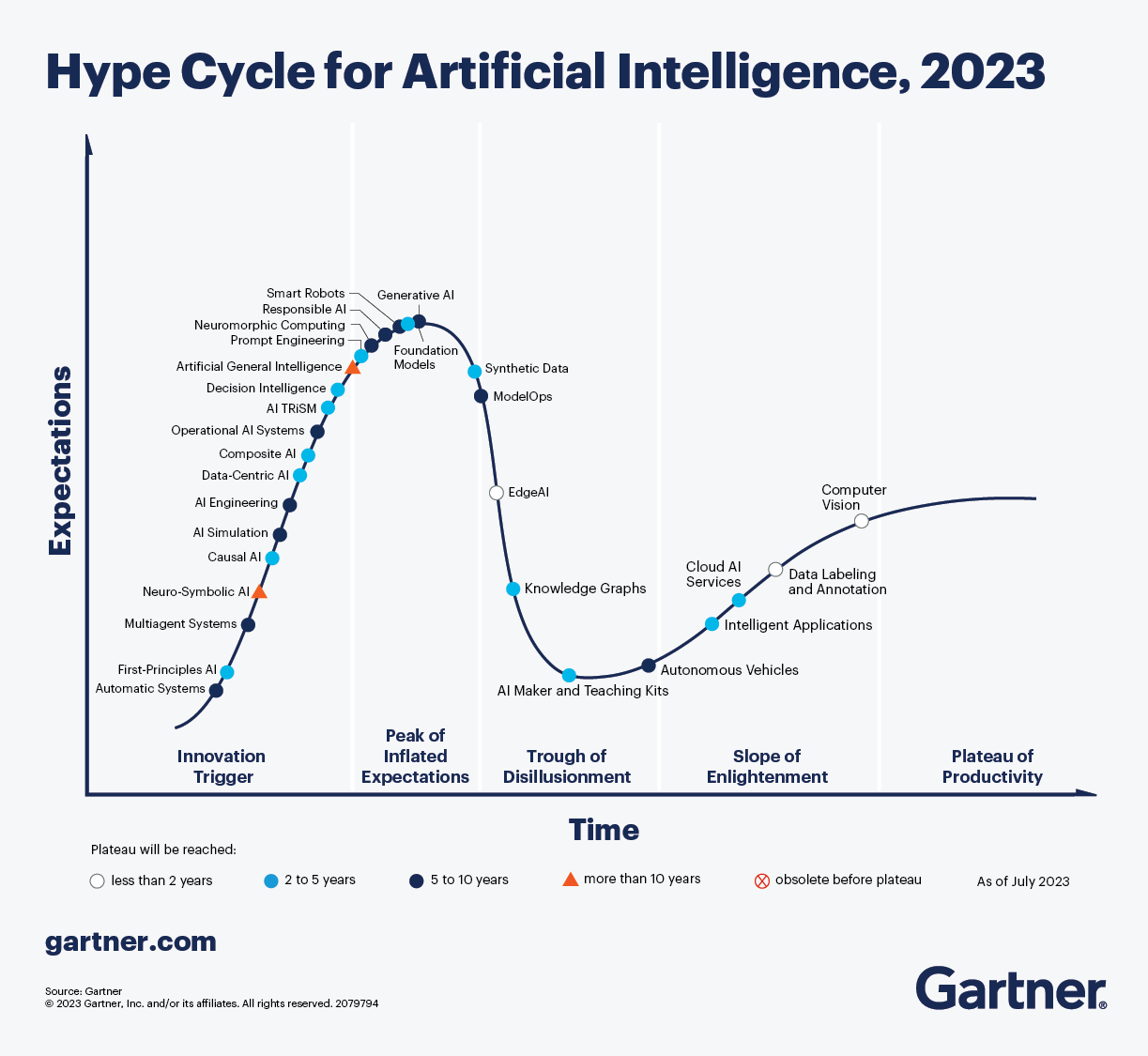It is hard not to notice that AI is a hot topic everywhere – from workplaces and dinner conversations to podcasts & news feeds. While its practical applications in our daily roles may still be limited, the potential is enormous. It is tempting to either join the chorus singing its praises or side with the critics predicting deaths & rebirths of AI. Instead, what is important is to learn about managing change from the many shifts and rebirths of AI. Let us explore the history of AI and it’s own change journey to see what we can learn about technology and managing this current change of Generative AI which is upon us.
What are AI Winters?
AI winters refer to periods when interest, investment, and progress in artificial intelligence significantly decline. These downturns typically occur after a phase of high expectations and hype. When the technology fails to deliver immediate, practical results.
Have we had AI winters before?
Yes! The first one occurred in 1974-1980.
In the 1950’s and 60’s there was great excitement about AI. Researchers had been able to get AI to play chess and solve algebra puzzles. A human like intelligence is not far away people thought.
But as the years went by, these early AI systems could not do much more than simple tasks. They struggled with real-world problems.
By the 1970s, people started losing interest. Governments and companies stopped funding AI research because it was not delivering on its big promises. Many companies closed down. Many researchers left the field.
Second AI winter (1987-1993)
Fast forward a bit, AI made a comeback with expert systems. These were like smart advisors for specific tasks. One famous expert system was called MYCIN. It helped doctors figure out what kind of infections people had and prescribe antibiotics!
Governments, especially in Japan and the United States, funded ambitious AI projects. Like Japan’s Fifth Generation Computer Systems project. It aimed to create computers that could perform human-like reasoning and understanding.
But expert systems were expensive to build and hard to maintain. They could not easily learn new things or adapt to changes. As the hype faded, investments dried up again.
Another AI winter set in. Companies like Xerox had to scale back their AI research.
Revival of AI in 2000’s:
The turning point came when IBM’s AI Deep blue defeated world chess champion Gary Kasparov. People were stunned. The Times carried a headline which said “Man vs. Machine: Kasparov Falls to Deep Blue”.
Then came AlphaGo in 2016. This was the first time an AI had beaten a top Go player Lee Sedol. AI was back…!
Many many factors contributed to the revival of AI. The improvements in computing power, large data sets, open-source ways of working which allowed access.
Will there by an AI winter for Generative AI?
Generative AI has been growing tremendously over the decades.
Do you remember talking to Siri for the first time in 2011 (It feels so long ago!). Or when Alexa came into our homes for the first time in 2014. Or when we thanked Google for organising our photos so easily in 2015. GPT-2 first came out in 2018.
Today Gartner’s hype cycle says we are at the peak of inflated expectations from Generative AI. Which possibly explains why #ScarlettSaidNo and why it feels like AI everywhere!
The trough of disillusionment will follow. Will it be a few months or a few years away is hard to tell and beside the point!

Image Source: Gartner
AI Winters and Change.
AI winters teach us that technological progress often comes in waves. Initial hype may lead to disillusionment. But underlying advancements eventually lead to practical, valuable applications.
So, what can we as business leaders and professionals do?
1) Remain curious about technology.
The best way to stay relevant is to stay curious about what technology can do. Quickly adopt, explore and see what else is possible with the available technology. Rather than dismiss it for its limitations. Remember this is possibly the worse AI version we are using. It will only get better.
2) Reimagine work
Often, we make the mistake of using new technology to create incremental improvements. Reimagining how work can be delivered by leveraging technology will be key. This reimagining will happen through experiments and conversations, both of which need strong leadership skills.
Stay curious. Stay away from the hype.